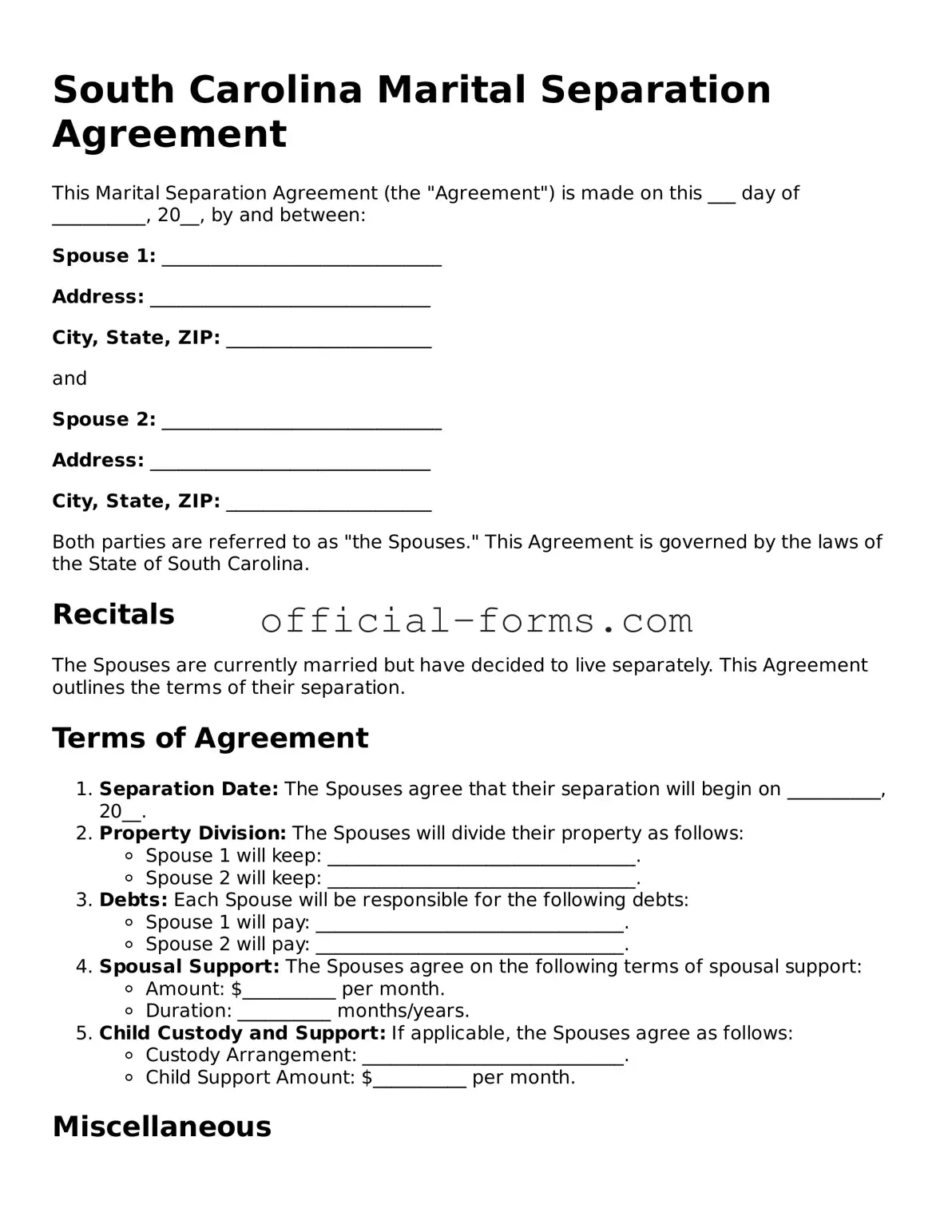In South Carolina, couples considering a separation may find the Marital Separation Agreement form to be an essential tool in outlining their rights and responsibilities during this transitional period. This legal document serves as a roadmap for spouses, detailing how they will manage various aspects of their lives while living apart. Key components typically addressed in the agreement include the division of property and debts, child custody arrangements, and financial support obligations. By clearly specifying these terms, the agreement aims to minimize conflict and provide clarity for both parties. It is important for individuals to understand that this form not only helps in establishing a mutual understanding but can also be a valuable asset should the couple later decide to pursue divorce. Additionally, the agreement must comply with state laws to ensure its enforceability, making it crucial for individuals to consider seeking legal advice when drafting this document. Overall, the Marital Separation Agreement form plays a significant role in facilitating a smoother separation process, allowing both spouses to move forward with their lives in a more organized manner.
